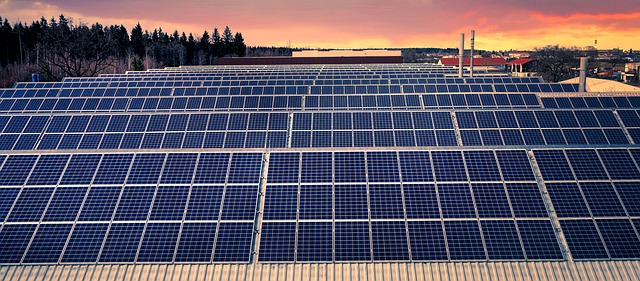Maintaining your solar panels might not be at the top of your to-do list, but it’s a task that shouldn’t be overlooked. Over time, dirt, bird droppings, leaves, and even pollen can accumulate on the surface of your panels, reducing their efficiency. While a thin layer of dust might seem harmless, it can block sunlight and decrease energy output by 20% or more.
For homeowners with pitched roofs, cleaning solar panels can be particularly challenging. However, with the right approach, you can keep your panels in top shape without compromising safety.

Why Cleaning Solar Panels on a Pitched Roof is Tricky
- Safety Risks Due to Steep Angles
Cleaning solar panels on a pitched roof isn’t as straightforward as washing windows. The steep incline increases the risk of slips, falls, and balance issues. Safety should always be your top priority when working on a sloped surface. - Accessibility Challenges
Unlike flat roofs, pitched roofs make it harder to reach your solar panels. Ladders may not provide stable access, and improper footing can make the cleaning process less effective. - Reduced Cleaning Efficiency
The angle of a pitched roof can cause water and cleaning solutions to run off too quickly, leaving streaks or residue behind. This can hinder the panels’ ability to absorb sunlight effectively.
Step-by-Step Guide to Cleaning Solar Panels on a Pitched Roof
Follow these steps to clean your solar panels safely and effectively:
- Prioritize Safety
Before you begin, ensure you have the right safety gear. A harness, safety rope, and sturdy ladder are essential. Avoid working alone—having someone nearby can be a lifesaver in case of an emergency. Also, check the weather forecast and avoid cleaning during high winds or rain. - Turn Off the System
Always power down your solar panels before cleaning. Combining water and electricity is dangerous, so this step is non-negotiable. - Rinse Off Loose Debris
Use a garden hose with a spray nozzle to remove loose dirt, dust, or leaves. This pre-cleaning step minimizes the need for scrubbing, reducing the risk of scratching the panels. - Choose the Right Tools
Opt for soft-bristle brushes, sponges with extension poles, or specialized solar panel cleaning tools. Avoid abrasive materials like steel wool, as they can damage the panel surface. - Use Gentle Cleaning Solutions
Mix water with a small amount of eco-friendly dish soap. Apply the solution to the panels using your brush or sponge, gently scrubbing away stubborn dirt. Avoid harsh chemicals or high-pressure washers, which can harm the protective glass coating. - Rinse and Inspect
After cleaning, rinse the panels thoroughly with your garden hose to prevent streaks. Once done, inspect the panels from a safe distance to ensure no dirt or residue remains.
Pro Tip: If your roof is too steep or the panels are hard to reach, consider hiring a professional cleaning service. It’s better to be safe than sorry.
Essential Tools for DIY Solar Panel Cleaning
Here’s what you’ll need to clean your solar panels effectively:
- Telescopic Extension Pole with a soft sponge or brush attachment.
- Garden Hose with a spray nozzle for controlled water flow.
- Eco-Friendly Cleaning Solution to avoid leaving harmful residue.
- Safety Harness and Rope for secure rooftop work.
- Ladder Stabilizer to ensure safe access to your roof.
These tools are widely available at hardware stores or online, making them accessible for most homeowners.
Maintenance Tips for Optimal Solar Panel Performance
To keep your solar panels functioning at their best, follow these maintenance tips:
- Schedule Regular Inspections: Check for dirt buildup at least twice a year. If you live in a dusty or pollen-heavy area, inspect more frequently.
- Trim Overhanging Trees: Falling leaves and bird droppings are common culprits of dirty panels.
- Monitor Performance: Use an energy monitoring app to track your system’s output. A drop in performance could indicate cleanliness issues.
- Install Bird Guards: Prevent nests and debris buildup by adding protective barriers around your panels.
- Hire Professionals Annually: Even if you handle minor cleanings, an annual professional service ensures no stubborn stains or grime are overlooked.
What Happens If You Neglect Cleaning?
Dirty solar panels can significantly reduce your system’s efficiency, leading to higher electricity bills and a lower return on investment. Regular maintenance not only boosts performance but also extends the lifespan of your solar panels.
Frequently Asked Questions (FAQ)
- How often should I clean my solar panels?
Most homeowners should clean their panels twice a year. However, those in dusty areas or regions with frequent rainfall may need to clean them more often. - Can I use a pressure washer on my solar panels?
No. Pressure washers can damage the protective glass coating. Stick to a garden hose and a soft sponge or brush. - Is it worth hiring professionals?
Yes, especially for high or hard-to-reach panels. Professionals have the right equipment and expertise to clean efficiently and safely. - What’s the best time to clean solar panels?
Early morning or late afternoon is ideal, as the panels are cooler and easier to clean.
Keep Your Solar Panels Performing at Their Best
Cleaning solar panels on a pitched roof doesn’t have to be daunting. With the right tools, safety precautions, and regular maintenance, you can ensure your panels operate at peak efficiency, saving you money on energy bills. If you’re unsure about tackling the job yourself, don’t hesitate to call in the professionals. Your investment deserves the best care possible.
Need assistance? Reach out to trusted solar panel cleaning services or share your own tips and experiences below!